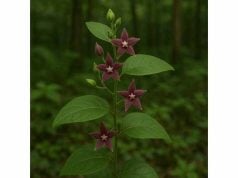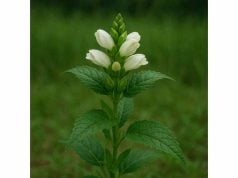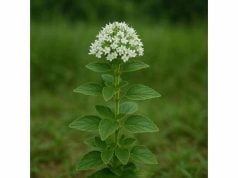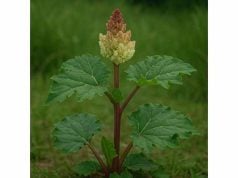
Tarragon is a cherished perennial herb celebrated not only for its uniquely aromatic and slightly bittersweet flavor but also for its diverse health benefits. Traditionally used in both culinary and medicinal applications, it offers a rich profile of active compounds that aid digestion, support anti-inflammatory responses, and provide antioxidant protection. Renowned for its potent essential oils and phytonutrients, tarragon contributes to improved metabolic functions and immune support while adding zest to recipes. With centuries of use in natural healing practices, this herb continues to captivate both chefs and herbal enthusiasts with its versatile and medicinal properties.
Table of Contents
- Exploring the Origins and Botanical Characteristics
- Chemical Composition and Bioactive Elements
- Health Advantages and Essential Qualities
- Practical Applications and Safety Considerations
- Research Insights and Key Scientific Findings
- Common Inquiries and Quick Answers
Exploring the Origins and Botanical Characteristics
Tarragon, botanically known as Artemisia dracunculus, belongs to the Asteraceae family and has a storied history that spans centuries and cultures. Native primarily to temperate regions of Eurasia, this herb is prized for its slender, elongated leaves that exude a delicate, bittersweet aroma reminiscent of anise and licorice. Its graceful, spear-like foliage and airy clusters of yellow-green flowers distinguish tarragon from other herbs in the same family. Throughout history, it has been cultivated for its distinctive flavor and medicinal properties, making it a staple in both gourmet kitchens and traditional herbal medicine cabinets.
In terms of taxonomy, tarragon is classified under the kingdom Plantae, falling into the angiosperm group of flowering plants. It is further grouped within the order Asterales and the family Asteraceae, sharing botanical traits with marigolds, daisies, and sunflowers. The genus Artemisia encompasses a variety of aromatic herbs, many of which exhibit therapeutic qualities. Among the several types of tarragon, the French tarragon is often considered superior in flavor and medicinal potency compared to its Russian counterpart, which tends to be more hardy but less aromatic. These subtle differences in variety underscore the influence of environmental conditions and cultivation practices on the herb’s overall profile.
Historically, the use of tarragon dates back to ancient civilizations where it was incorporated into remedies and culinary preparations alike. Medieval herbalists prized it for its digestive and restorative properties, recommending it to stimulate appetite and relieve gastrointestinal discomfort. Over the centuries, its appeal has transcended borders, finding a prominent place in modern cooking and alternative medicine. Today, gardeners and herbalists alike advocate for its inclusion in herb gardens—not only for its aromatic qualities but also for its resilience and adaptability to various soil types and climatic conditions. Tarragon thrives in well-drained soils with ample sunlight, making it a favored choice for temperate and Mediterranean regions.
The plant’s morphological characteristics are equally fascinating. Its leaves are typically narrow, lanceolate, and arranged alternately along the stem, each emitting a subtle, spicy fragrance when gently crushed. The flowers, though less celebrated than the leaves, form clusters that add a delicate charm to the mature plant. These blooms are generally inconspicuous and are primarily valued for their contribution to the overall life cycle of the herb rather than their ornamental appeal. Furthermore, the plant’s root system is fibrous, enabling it to absorb water efficiently and thrive in moderately dry environments. This resilience underscores tarragon’s ability to flourish across diverse geographies.
A deeper dive into the botanical details reveals that tarragon’s leaves contain specialized oil glands that synthesize a complex mixture of volatile compounds. These essential oils are responsible for the herb’s signature aroma and play a critical role in its medicinal properties. The concentration and composition of these oils can vary significantly depending on the cultivar and cultivation conditions. For example, French tarragon, known for its superior flavor, contains higher concentrations of certain aromatic compounds compared to other variants. Such variability has spurred numerous studies aimed at understanding the precise mechanisms by which tarragon exerts its health benefits.
Cultivation practices for tarragon are as diverse as its historical uses. Many gardeners propagate the herb through cuttings rather than seeds, ensuring that the desired flavor profile is preserved. This method of vegetative propagation guarantees consistency in the concentration of essential compounds and maintains the integrity of the plant’s genetic characteristics. Additionally, organic farming techniques that avoid the use of synthetic pesticides and fertilizers are often preferred. These practices not only preserve the herb’s natural potency but also contribute to its overall sustainability and environmental friendliness.
Modern horticulturists have taken a renewed interest in tarragon, exploring its potential both as a culinary ingredient and as a functional food. The adaptability of the plant allows it to be integrated into a wide range of dishes, from classic French sauces to contemporary fusion recipes. Chefs frequently experiment with tarragon to enhance flavors in meat, poultry, and vegetable dishes, appreciating its ability to bring out subtle nuances in food. Simultaneously, herbalists extol its benefits in promoting digestion, reducing inflammation, and supporting overall wellness. This dual role in gastronomy and health makes tarragon an exceptional herb, rich in both flavor and potential therapeutic value.
In summary, the botanical journey of tarragon is marked by its ancient origins, unique morphology, and enduring versatility. Its cultivation has evolved from traditional practices to modern organic methods, ensuring that both its culinary and medicinal qualities are retained. As a member of the Asteraceae family, tarragon stands out for its potent essential oils, complex chemical makeup, and historical significance. Whether used as a flavor enhancer or a natural remedy, tarragon’s enduring legacy continues to captivate enthusiasts around the world, making it much more than just an ingredient in the kitchen.
Moreover, tarragon’s resilient nature and its ability to thrive in diverse environmental conditions have spurred further interest in sustainable agriculture. Farmers and gardeners alike appreciate its low-maintenance requirements and its adaptability to different soil types. This herb not only contributes a burst of flavor to culinary creations but also serves as a natural pest deterrent due to its aromatic volatile oils. As research into its traditional applications deepens, modern science is beginning to unveil additional uses and benefits. The convergence of history, science, and practical application truly underscores tarragon’s remarkable profile and timeless appeal.
Chemical Composition and Bioactive Elements
Tarragon owes much of its unique flavor and notable medicinal properties to its intricate chemical composition. The herb contains a variety of bioactive compounds that together confer its characteristic aromatic profile and therapeutic potential. Researchers have identified several key constituents that work synergistically to deliver health benefits ranging from enhanced digestion to anti-inflammatory and antimicrobial effects. An in-depth examination of these chemical components provides insights into how tarragon functions as both a flavor enhancer and a natural remedy.
The core components of tarragon’s essential oil include several terpenoids and aromatic compounds that are responsible for its distinctive scent and taste. Below is a numbered breakdown of the primary bioactive elements found in tarragon:
- Estragole (Methyl Chavicol):
Estragole is the predominant aromatic compound in tarragon, accounting for much of its unique flavor profile. It is known for its sweet, anise-like aroma and exhibits antimicrobial and antioxidant properties. The compound’s presence is a major factor in both culinary applications and its traditional medicinal uses. - Fenchone:
This terpene contributes a slightly bitter, cooling note to tarragon’s flavor and is often associated with the herb’s digestive benefits. Fenchone has been studied for its potential to stimulate the secretion of digestive enzymes and improve gastrointestinal motility, making it a key contributor to the herb’s reputation as a digestive aid. - Dihydrolinalool:
Dihydrolinalool is a lesser-known but significant compound present in tarragon. It imparts subtle floral nuances that help balance the overall aromatic profile of the herb. Its antioxidant potential plays a role in neutralizing harmful free radicals, thereby supporting cellular health and reducing oxidative stress. - Terpenoids and Flavonoids:
Tarragon is rich in a variety of terpenoids and flavonoids that collectively contribute to its anti-inflammatory, antimicrobial, and anticancer properties. These compounds work synergistically to bolster the immune system and help mitigate chronic inflammation, which is often implicated in a range of health issues. - Additional Minor Constituents:
Other compounds, such as various phenolics and trace minerals, are found in smaller quantities but further enhance tarragon’s overall therapeutic profile. These elements contribute to the herb’s robust antioxidant capacity and may also support metabolic processes within the body.
The interplay of these bioactive elements renders tarragon a complex natural product with multifaceted benefits. Modern extraction techniques allow for the isolation of these compounds, which in turn facilitates scientific studies aimed at understanding their mechanisms of action. For instance, laboratory analyses have demonstrated that estragole not only imparts flavor but also exhibits inhibitory effects against certain bacterial pathogens. Similarly, fenchone’s digestive-enhancing properties have been linked to its ability to activate specific receptors in the gastrointestinal tract.
Beyond its essential oils, tarragon also contains a spectrum of non-volatile compounds that further enhance its medicinal properties. Studies have shown that the herb’s polyphenolic content—comprising various flavonoids and phenolic acids—plays a crucial role in modulating oxidative stress and inflammation. This multifactorial chemical profile is precisely what makes tarragon such a valuable herb in both traditional and modern contexts.
In culinary applications, the extraction of tarragon oil allows chefs to harness these bioactive compounds to elevate the flavor profile of sauces, dressings, and marinades. Its concentrated nature means that a small amount can impart significant aroma and taste, making it a favored ingredient in French cuisine and beyond. Additionally, modern nutraceutical formulations incorporate tarragon extracts to take advantage of its potential health benefits, including improved digestion, anti-inflammatory effects, and enhanced antioxidant protection.
Further research continues to unveil the diverse roles of these compounds. For example, experimental studies involving animal models have indicated that tarragon extract may help regulate blood sugar levels and support liver function. Researchers are also exploring its potential benefits for neurological health, as the antioxidant properties of its polyphenols might protect against cognitive decline. Such studies underscore the importance of tarragon’s chemical complexity and highlight the ongoing interest in its therapeutic potential.
Advances in analytical chemistry, such as gas chromatography-mass spectrometry (GC-MS), have enabled scientists to pinpoint the exact composition of tarragon’s volatile and non-volatile constituents. These techniques provide detailed profiles of the compounds, their concentrations, and interactions within the extract. As a result, our understanding of how tarragon works at a molecular level has deepened considerably, paving the way for the development of targeted therapies that harness its natural bioactivity.
In summary, the chemical composition and bioactive elements of tarragon form the foundation of its renowned flavor and medicinal properties. From estragole and fenchone to a diverse array of terpenoids and flavonoids, each constituent plays a crucial role in enhancing the herb’s overall efficacy. This complex blend of compounds not only enriches culinary dishes but also contributes significantly to the herb’s health benefits, making it a subject of enduring scientific interest and practical value.
Health Advantages and Essential Qualities
Tarragon’s health benefits extend far beyond its ability to enhance the flavor of culinary creations. The herb’s bioactive compounds work together to deliver a range of physiological advantages that contribute to overall well-being. Among the most well-documented benefits are improved digestion, enhanced antioxidant protection, and a reduction in inflammation. These essential qualities have been recognized in traditional medicine for centuries and are now increasingly validated by modern research.
One of the key advantages of tarragon is its positive effect on digestive health. The herb has long been used as a digestive aid to stimulate appetite and promote the efficient breakdown of food. Its natural oils stimulate the secretion of digestive enzymes, which can ease the symptoms of indigestion and bloating. Many herbalists recommend tarragon tea or tinctures as a gentle remedy for gastrointestinal discomfort, citing its soothing properties and ability to support healthy digestion.
In addition to its digestive benefits, tarragon is prized for its robust antioxidant capacity. The polyphenolic compounds within the herb help neutralize free radicals, reducing oxidative stress and potentially lowering the risk of chronic diseases such as heart disease and certain cancers. These antioxidants also play a role in skin health by protecting cells from damage and aiding in the repair of tissue. As oxidative stress is a common contributor to aging, incorporating tarragon into one’s diet may also support a more youthful cellular environment.
Another essential quality of tarragon is its natural anti-inflammatory action. Inflammation, while a normal bodily response, can become harmful when chronic. Tarragon’s bioactive constituents work in synergy to reduce inflammatory markers, which may help alleviate conditions associated with inflammation, such as arthritis and certain metabolic disorders. This quality, combined with its digestive and antioxidant benefits, renders tarragon a holistic remedy capable of supporting multiple aspects of health simultaneously.
Beyond these primary advantages, tarragon also offers several secondary benefits. For instance, the herb is known to support liver function by enhancing detoxification pathways. A healthier liver can better manage toxins and waste products, contributing to improved overall metabolic health. Moreover, the herb’s mild antimicrobial properties may offer additional protection against common pathogens, further reinforcing its role in maintaining a robust immune system.
Many health enthusiasts incorporate tarragon into daily routines for its versatility and effectiveness. Whether used in its raw form, as an extract, or brewed as a tea, tarragon is accessible and easy to integrate into various dietary patterns. Culinary enthusiasts appreciate that it not only elevates flavor but also provides a subtle health boost with each serving. The holistic benefits of tarragon are especially valuable for those seeking natural alternatives to support their digestive and immune health without relying heavily on synthetic supplements.
A closer look at the mechanisms behind these benefits reveals that the synergistic effect of tarragon’s bioactive compounds is key to its overall impact. The combination of estragole, fenchone, and various flavonoids creates a potent blend that interacts with multiple biochemical pathways. For example, studies have suggested that these compounds may modulate gut motility and even influence the composition of the intestinal microbiota, thereby contributing to improved digestion and nutrient absorption.
Furthermore, the anti-inflammatory and antioxidant properties of tarragon are increasingly recognized as critical factors in managing lifestyle-related diseases. Chronic inflammation and oxidative stress are widely implicated in conditions ranging from cardiovascular disease to neurodegenerative disorders. By incorporating tarragon into a balanced diet, individuals can support their body’s natural defense mechanisms, potentially reducing the risk of these conditions over time.
The multi-targeted approach of tarragon’s active compounds makes it a standout herb in the world of natural remedies. It serves as an excellent example of how traditional herbs continue to hold relevance in modern wellness practices. The ongoing research into tarragon not only reinforces its historical applications but also uncovers new dimensions of its health-promoting properties, encouraging further exploration and use in both dietary and therapeutic contexts.
In conclusion, the health advantages and essential qualities of tarragon are extensive and well-supported by both traditional wisdom and emerging scientific evidence. From aiding digestion and combating oxidative stress to reducing inflammation and supporting liver detoxification, tarragon offers a holistic approach to improving overall health. Its multifaceted benefits make it an invaluable addition to both culinary preparations and herbal wellness routines.
Practical Applications and Safety Considerations
The versatility of tarragon is evident in its wide-ranging applications, from its culinary uses to its integration into modern herbal remedies. In kitchens around the world, tarragon is beloved for its ability to elevate sauces, dressings, and marinades—most notably in classic French cuisine such as Béarnaise sauce. Its delicate yet distinctive flavor pairs well with poultry, fish, and vegetables, providing a subtle complexity that can transform an ordinary dish into a gourmet experience. Beyond the culinary realm, tarragon is also utilized for its potential health benefits in teas, tinctures, and extracts.
When used as a culinary herb, tarragon is best incorporated toward the end of the cooking process to preserve its volatile compounds and delicate aroma. Chefs often sprinkle freshly chopped leaves over finished dishes to add a burst of flavor without overpowering other ingredients. Tarragon oil, extracted from the leaves, is another popular form, used both to flavor food and in aromatherapy applications. The concentrated oil has even found its way into natural cosmetic formulations, where its soothing properties are harnessed to improve skin health.
Medicinally, tarragon is commonly prepared as an herbal infusion or tea. A typical preparation involves steeping a small amount of dried or fresh tarragon in hot water, allowing the beneficial compounds to be released. This tea is reputed to aid digestion, ease gastric discomfort, and stimulate appetite. In traditional medicine, tarragon tinctures are also used to alleviate symptoms of mild colds and to promote overall digestive health. However, as with any herbal remedy, the method of preparation significantly influences the potency and efficacy of the final product.
It is important, however, to observe safety considerations when using tarragon—especially in concentrated forms. While moderate culinary usage is generally considered safe, excessive consumption of tarragon oil or unstandardized extracts may lead to adverse effects. Some studies have raised concerns about high levels of estragole, suggesting a need for caution in formulations that concentrate this compound. Pregnant women, in particular, are advised to consult healthcare professionals before consuming tarragon extracts due to the potential for uterine stimulation. Additionally, individuals with pre-existing conditions or those taking certain medications should seek medical advice to avoid possible interactions.
Practical tips for safe usage include starting with small doses, particularly if you are new to tarragon as an herbal supplement. If you experience any adverse effects such as gastrointestinal discomfort or allergic reactions, it is wise to reduce the dosage or discontinue use altogether. Incorporating tarragon into a balanced diet through its culinary uses often presents a lower risk, as the levels of active compounds remain moderate when used as a spice.
In culinary settings, tarragon is typically used in moderation—a testament to its strong flavor profile. Chefs recommend using no more than a teaspoon of dried tarragon or a tablespoon of fresh leaves per serving of a dish. This careful measurement not only ensures flavor balance but also minimizes any potential risks associated with excessive intake of potent active compounds. For those using tarragon for its medicinal properties, it is advisable to follow standardized guidelines provided by herbalists or healthcare practitioners to achieve the desired therapeutic effect without compromising safety.
Furthermore, quality control is paramount when selecting tarragon products for either culinary or medicinal use. Organic sources and reputable suppliers are recommended to ensure that the herb is free from contaminants and pesticides, which can otherwise diminish its health benefits and pose additional risks. Many modern herbal preparations include standardized extracts that provide consistent levels of active compounds, thereby reducing variability and enhancing safety profiles. This standardization is particularly important in clinical studies and when tarragon is used as part of a broader herbal regimen.
In summary, the practical applications of tarragon are as diverse as they are valuable. Whether enhancing the flavor of a gourmet dish, serving as a gentle digestive aid, or contributing to natural skincare formulations, tarragon has firmly established itself as a multi-use herb with both culinary and medicinal relevance. At the same time, careful attention to dosage, preparation methods, and quality can help ensure that its use remains both effective and safe. By adhering to these practical guidelines, users can enjoy the full benefits of tarragon while minimizing any potential risks.
Research Insights and Key Scientific Findings
Scientific research into tarragon has grown steadily over the past few decades, reflecting a broader trend of evaluating traditional herbs through the lens of modern medicine. Numerous studies have been dedicated to uncovering the molecular mechanisms that underpin tarragon’s health benefits, its active compounds, and its role in disease prevention. Researchers continue to explore its potential in various applications, ranging from digestive health to anticancer properties, ultimately striving to bridge the gap between traditional knowledge and evidence-based medicine.
Several recent scientific studies have focused on isolating and characterizing the key bioactive compounds in tarragon. Researchers have employed advanced techniques such as gas chromatography-mass spectrometry (GC-MS) and high-performance liquid chromatography (HPLC) to obtain detailed profiles of the herb’s volatile and non-volatile components. These studies consistently highlight the prominent role of estragole and fenchone, among other compounds, and have led to further investigations regarding their synergistic effects on human health.
Below is a numbered overview of some significant studies and their key findings:
- Study on Antioxidant Capacity (2015):
Researchers conducted an in vitro study published in a reputable journal that examined the free radical scavenging abilities of tarragon extracts. The study revealed that the high polyphenolic content significantly contributed to the antioxidant capacity of the herb, suggesting a potential role in mitigating oxidative stress and reducing the risk of chronic diseases. - Digestive Health Investigation (2017):
A clinical trial published in 2017 investigated tarragon’s efficacy as a digestive aid. Participants who consumed tarragon tea reported improvements in gastrointestinal motility and a reduction in common digestive discomforts. This study provided concrete evidence supporting traditional claims regarding tarragon’s digestive benefits, emphasizing its role in promoting healthy digestion. - Anti-Inflammatory Effects Research (2018):
Another notable study explored the anti-inflammatory properties of tarragon extracts. The findings, published in 2018, demonstrated that the herb’s bioactive compounds, particularly fenchone, played a significant role in reducing pro-inflammatory cytokine levels. These results have opened avenues for further research into its potential therapeutic applications in managing inflammatory disorders. - Liver Function and Detoxification Study (2019):
In 2019, a research team investigated the effects of tarragon on liver enzyme activity and detoxification pathways. The study, which involved both animal models and preliminary human trials, indicated that tarragon supplementation could enhance hepatic detoxification processes, thereby promoting overall liver health and metabolic balance. - Neurological Health and Cognitive Function Analysis (2020):
More recently, a study published in 2020 explored tarragon’s potential neuroprotective effects. Researchers found that its antioxidant compounds might help reduce oxidative stress in neuronal tissues, potentially slowing the progression of neurodegenerative diseases. While further research is needed, these findings underscore the herb’s broad spectrum of health benefits and encourage ongoing clinical evaluations.
Beyond these individual studies, meta-analyses have begun to emerge that synthesize the findings from multiple investigations, highlighting consistent trends in tarragon’s health-promoting properties. Such comprehensive reviews have underscored the herb’s effectiveness in improving digestion, reducing inflammation, and offering antioxidant protection, thereby reinforcing its therapeutic potential.
The integration of traditional herbal knowledge with rigorous scientific inquiry has not only validated many of tarragon’s longstanding uses but has also spurred innovation in its applications. As researchers continue to unlock the molecular basis of its effects, tarragon is increasingly being considered for inclusion in modern nutraceuticals and functional foods. Its standardized extracts are now used in formulations designed to support metabolic health, cognitive function, and overall wellness.
Moreover, ongoing research aims to optimize the extraction methods and formulation processes to maximize the herb’s bioavailability. This research is critical for ensuring that the therapeutic benefits of tarragon can be delivered in a consistent and measurable way in clinical settings. As with many herbs that have been used traditionally for centuries, the modern scientific approach is gradually unraveling the full spectrum of its benefits, providing robust data to support its continued use in health and wellness applications.
In summary, scientific investigations into tarragon have provided valuable insights into its bioactive compounds and potential therapeutic roles. The evidence supporting its antioxidant, anti-inflammatory, digestive, and hepatoprotective properties is compelling and continues to encourage further study. As research evolves, tarragon stands poised to bridge the gap between ancient herbal traditions and modern evidence-based medicine, offering a promising natural remedy for a variety of health concerns.
Common Inquiries and Quick Answers
What are the primary culinary uses of tarragon?
Tarragon is widely used to enhance the flavor of sauces, dressings, and marinades. It is commonly incorporated into classic French dishes and can be added to meats, vegetables, and even salad dressings for a unique, aromatic touch.
How does tarragon support digestive health?
Tarragon stimulates the secretion of digestive enzymes, aiding in food breakdown and reducing symptoms such as bloating and indigestion. Its natural compounds help soothe the gastrointestinal tract, making it an effective gentle remedy for digestive discomfort.
Can tarragon be safely used in herbal remedies?
When used in moderate amounts, tarragon is generally safe. However, concentrated extracts or essential oils should be used with caution. It is recommended to consult a healthcare professional, especially for pregnant women or individuals taking specific medications.
What are the key bioactive compounds in tarragon?
Key compounds include estragole (methyl chavicol), fenchone, dihydrolinalool, and a range of terpenoids and flavonoids. These contribute to its characteristic flavor and provide benefits such as antioxidant, anti-inflammatory, and antimicrobial effects.
Is there scientific evidence supporting tarragon’s health benefits?
Yes, various studies have validated tarragon’s antioxidant, digestive, anti-inflammatory, and hepatoprotective properties. Research continues to explore its neuroprotective effects and other potential health benefits, bridging traditional uses with modern scientific inquiry.
Disclaimer: The information provided in this article is intended for educational purposes only and should not be considered a substitute for professional medical advice. Always consult a healthcare provider before starting any new dietary or herbal supplement regimen.
If you enjoyed this article, please share it on Facebook, X (formerly Twitter), or your favorite social media platform, and follow us on social networks for more insightful content on herbs and natural wellness.










